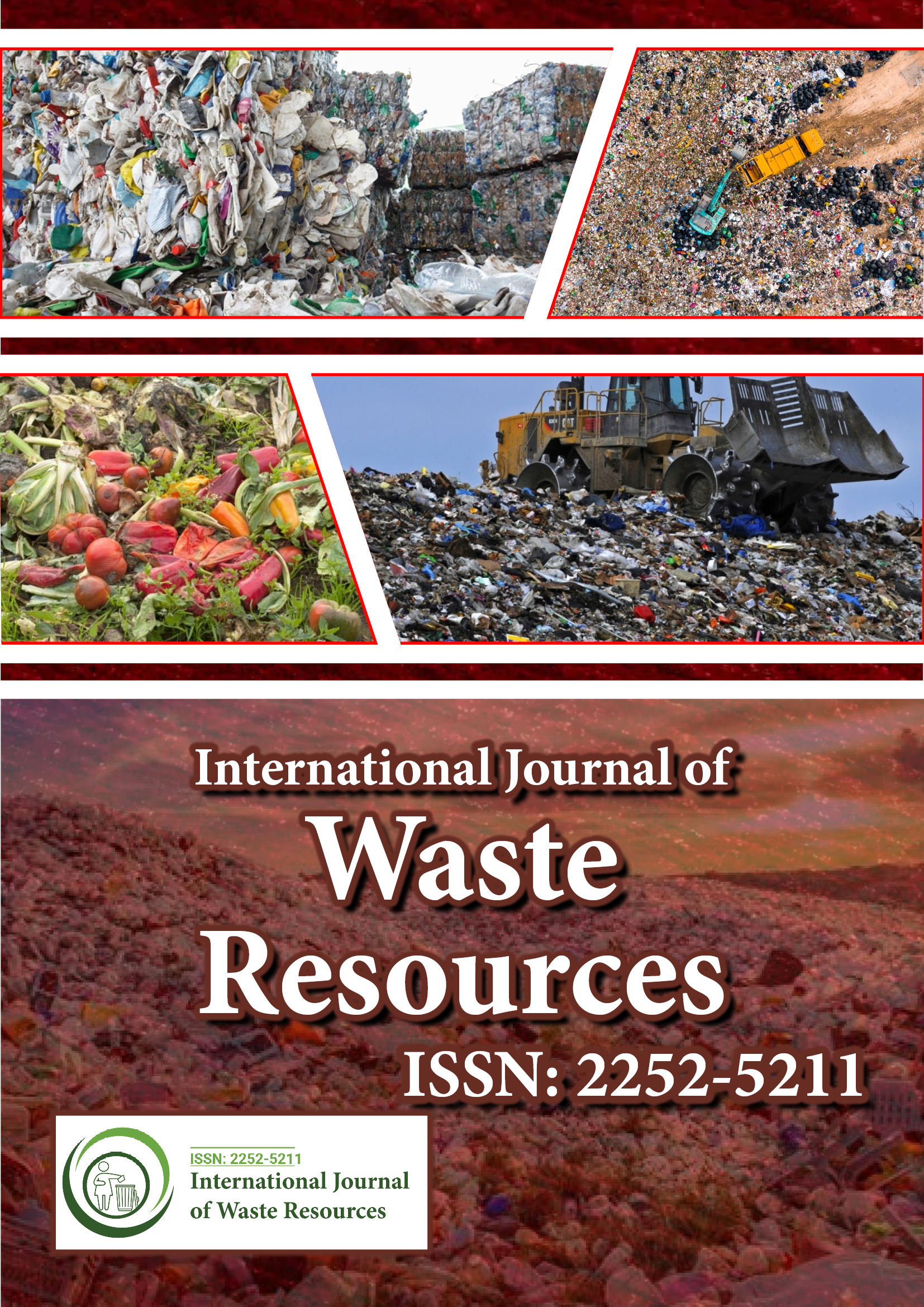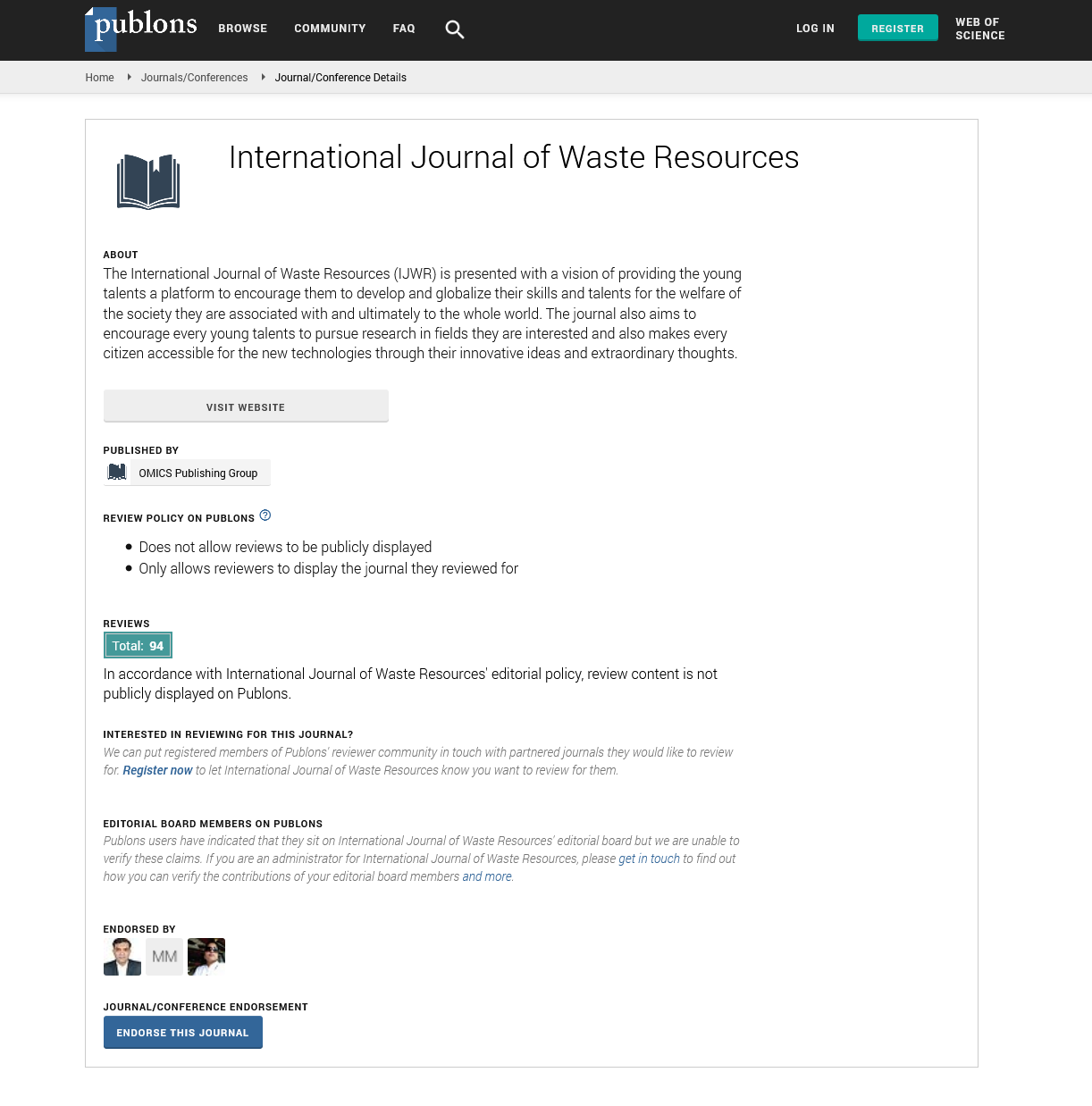Indexed In
- Open J Gate
- The Global Impact Factor (GIF)
- Open Archive Initiative
- VieSearch
- International Society of Universal Research in Sciences
- China National Knowledge Infrastructure (CNKI)
- CiteFactor
- Scimago
- Ulrich's Periodicals Directory
- Electronic Journals Library
- RefSeek
- Directory of Research Journal Indexing (DRJI)
- Hamdard University
- EBSCO A-Z
- Publons
- Google Scholar
Useful Links
Share This Page
Journal Flyer

Open Access Journals
- Agri and Aquaculture
- Biochemistry
- Bioinformatics & Systems Biology
- Business & Management
- Chemistry
- Clinical Sciences
- Engineering
- Food & Nutrition
- General Science
- Genetics & Molecular Biology
- Immunology & Microbiology
- Medical Sciences
- Neuroscience & Psychology
- Nursing & Health Care
- Pharmaceutical Sciences
Commentary - (2025) Volume 15, Issue 2
Pollution Prevention Areas: Strategies, Sectors, Implementation, Benefits, and Global Challenges
Bin Su*Received: 30-Apr-2025, Manuscript No. IJWR-25-29429; Editor assigned: 02-May-2025, Pre QC No. IJWR-25-29429; Reviewed: 16-May-2025, QC No. IJWR-25-29429; Revised: 23-May-2025, Manuscript No. IJWR-25-29429; Published: 31-May-2025, DOI: 10.35248/2252-5211.25.15.612
Description
Pollution prevention areas are specific sectors, practices, or regions where targeted strategies are implemented to reduce or eliminate the generation of pollutants at their source rather than managing them after they have been created. This proactive approach focuses on redesigning processes, altering practices and using less toxic materials to prevent environmental degradation. Unlike pollution control, which treats waste and emissions after production, pollution prevention aims to eliminate the cause of pollution altogether, offering more sustainable and cost-effective solutions.
Pollution can originate from various human activities, including industrial operations, agriculture, transportation, construction and urban development. In each of these sectors, pollution prevention involves identifying opportunities to minimize waste, conserve energy, reduce the use of harmful chemicals and improve efficiency. For instance, in manufacturing industries, pollution prevention areas focus on optimizing production processes, substituting raw materials with environmentally friendly alternatives and recovering waste for reuse. This not only reduces environmental impact but also often leads to cost savings through improved resource efficiency.
In agriculture, pollution prevention addresses the runoff of pesticides, herbicides and fertilizers into water bodies, which contributes to eutrophication, groundwater contamination and loss of biodiversity. Prevention strategies in this sector include Integrated Pest Management (IPM), organic farming, precision agriculture and proper storage and handling of agricultural chemicals. These methods reduce the reliance on chemical inputs, improve soil health and protect surrounding ecosystems. Buffer zones and cover cropping are also employed to minimize soil erosion and nutrient leaching, further reducing pollution at its source.
Urban pollution prevention areas include city planning, waste management and transportation systems. Cities produce large amounts of air, water and soil pollution due to high population density, traffic congestion, industrial emissions and construction activities. Preventive measures involve designing green infrastructure, such as green roofs, urban forests and permeable pavements, to reduce stormwater runoff and filter pollutants. Implementing public transportation systems, promoting electric vehicles and encouraging walking and cycling can significantly reduce emissions from fossil fuel combustion. Policies that incentivize recycling, composting and reduction of single-use plastics also contribute to urban pollution prevention.
In construction and demolition, prevention strategies aim to reduce dust emissions, noise pollution and construction debris. Using sustainable building materials, recycling construction waste, controlling stormwater runoff and applying dust suppression techniques are examples of preventive actions. Additionally, incorporating Environmental Impact Assessments (EIA) before project initiation helps identify potential sources of pollution and establish mitigation strategies in advance.
Pollution prevention in the energy sector focuses on reducing emissions from power generation, especially those caused by fossil fuels. Transitioning to renewable energy sources such as solar, wind and hydroelectric power reduces the production of carbon dioxide, sulfur dioxide, nitrogen oxides and particulate matter. Energy efficiency measures, such as upgrading equipment, improving insulation and optimizing grid systems, further reduce emissions. In industrial facilities, capturing waste heat and reusing it for power or heating needs is a common method of pollution prevention.
Marine and coastal pollution prevention areas include efforts to control discharge from ships, manage waste from coastal communities and reduce plastic pollution. Strategies include enforcing maritime regulations, improving port waste reception facilities, banning single-use plastics and conducting regular clean-up activities. Marine pollution prevention also relies on effective land-based waste management, as a large portion of ocean pollution originates from inland sources via rivers and drainage systems.
Mining and extraction industries are another critical area requiring pollution prevention due to their potential for soil, water and air contamination. Prevention methods include proper waste rock management, closed-loop water systems, dust control, tailings pond containment and minimizing the use of toxic leaching chemicals. Site restoration and rehabilitation plans are also essential components of pollution prevention to ensure that disturbed lands are returned to productive use or natural conditions.
Implementing pollution prevention strategies requires the cooperation of governments, businesses and communities. Regulatory frameworks play a vital role in encouraging or mandating preventive practices. Environmental regulations, such as the Pollution Prevention Act in the United States, support industries in adopting cleaner technologies and reducing emissions. Economic instruments such as tax incentives, grants and subsidies can motivate businesses to invest in pollution prevention innovations.
Public awareness and education are also crucial to the success of pollution prevention. Consumers influence production through their choices and informed consumers are more likely to support sustainable products and practices. Educational campaigns, environmental labeling and corporate transparency help shift behavior toward pollution prevention. Schools, universities and community organizations play a key role in disseminating knowledge and fostering environmental responsibility.
Monitoring and evaluation systems help assess the effectiveness of pollution prevention efforts. Metrics such as reduced emissions, decreased hazardous material usage, improved water and air quality and resource savings provide data for refining and improving strategies. Continuous research and development drive innovation in cleaner technologies and sustainable materials, expanding the possibilities for effective pollution prevention.
Despite the clear benefits, pollution prevention faces challenges including resistance to change, high initial investment costs, lack of technical knowledge and weak enforcement of environmental laws. Small and Medium-Sized Enterprises (SMEs) often struggle to implement preventive measures due to limited resources or expertise. Overcoming these barriers requires capacity building, financial support and partnerships between public and private sectors.
Conclusion
In conclusion, pollution prevention areas encompass a wide range of activities and sectors where targeted efforts are made to avoid the creation of pollutants at the source. By focusing on smarter design, cleaner production and sustainable practices, pollution prevention offers an effective path to environmental protection, economic efficiency and public health improvement. As global environmental pressures intensify, investing in pollution prevention becomes not just a preferred strategy but an essential one for a sustainable future.
Citation: Su B (2025) Pollution Prevention Areas: Strategies, Sectors, Implementation, Benefits and Global Challenges. Int J Waste Resour: 15:612.
Copyright: © 2025 Su B. This is an open-access article distributed under the terms of the Creative Commons Attribution License, which permits unrestricted use, distribution and reproduction in any medium, provided the original author and source are credited

